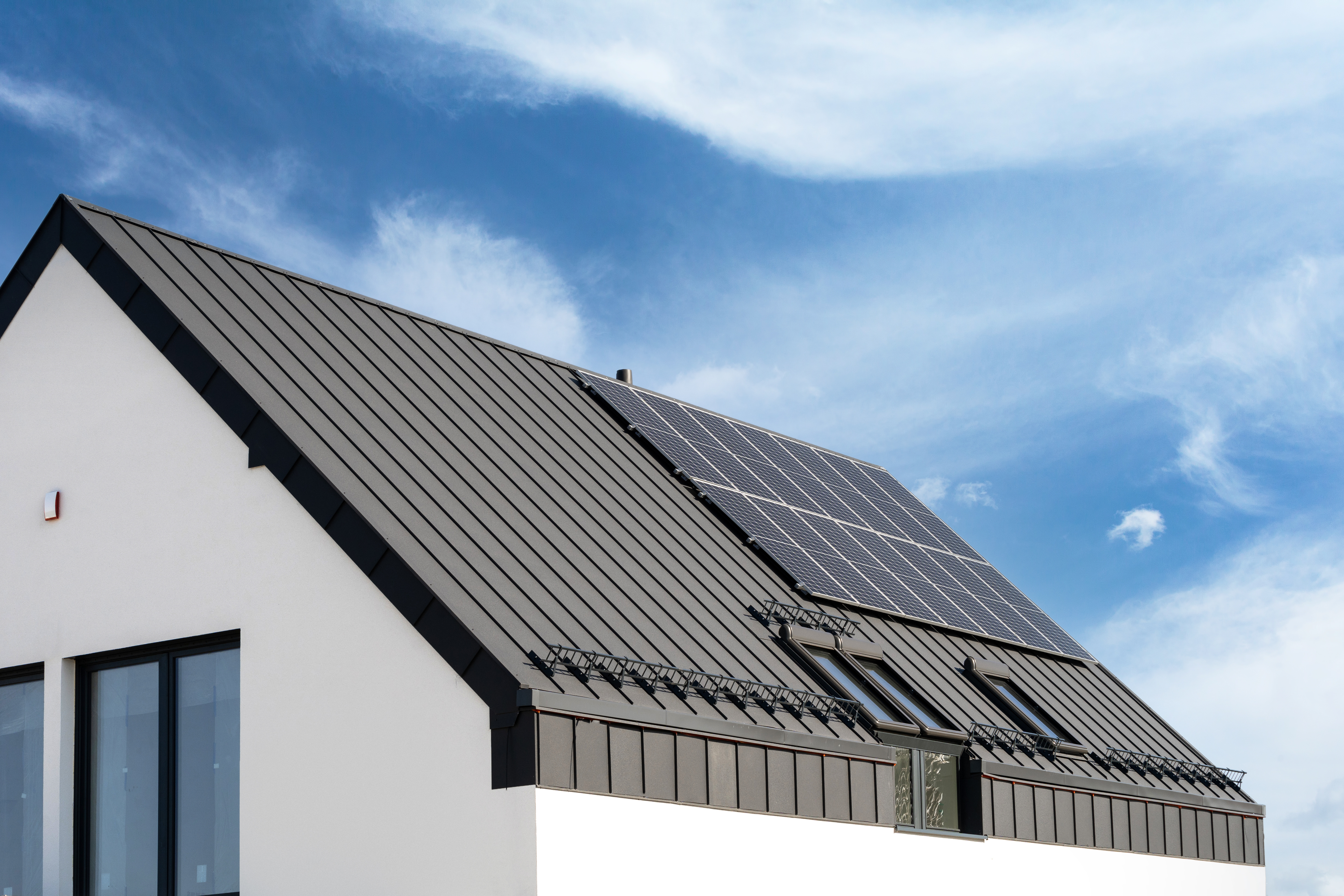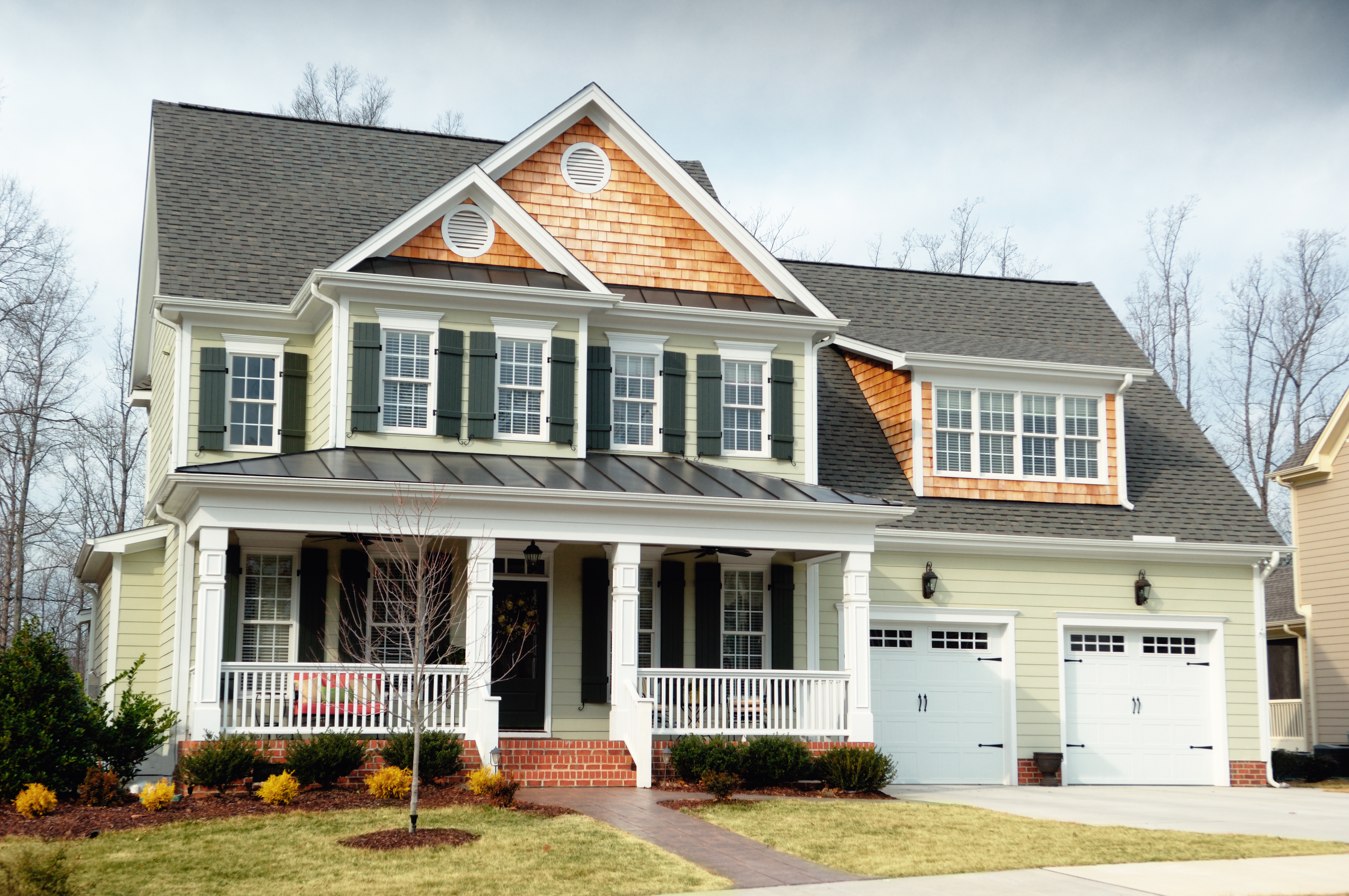
A metal roof can defend your home against Ohio’s varying weather conditions. Learn how much a metal roof costs in Columbus, OH.
Break your roof into sections for high-level accuracy


Learning how to measure a roof for shingles is simple when the task is divided into smaller parts. In fact, dividing your roof itself into smaller parts is the essence of the job. No matter how large, small, or complex your roof may be, measuring it accurately is a simple matter of adding up its various sections. Discover simple tricks to properly estimate how many shingles your roofing job needs.
Measuring your roof for shingles is inherently dangerous. Working from a ladder or on a roof poses serious falling risks that can result in severe injury. Preparing to measure your roof requires thinking about your personal safety. If you're at all uncomfortable with ladder work, the height of your roof, or anything else about the task, stop and call a professional roofer near you to do it for you.
Stay safe using the following tips.
Follow proper ladder safety guidelines, including using the ladder only on level ground, using a ladder stabilizer when necessary, having a helper hold the ladder when possible, and following the manufacturer's instructions for your particular ladder.
Use fall protection or fall-arrest equipment when working on your roof and understand how to use it.
Never get on a wet or snowy roof.
Stay aware of your surroundings and foot placement when on your roof.
If a situation feels uncomfortable, don't proceed.

The most accurate way to measure your roof is to divide it into sections. For example, if your roof is a simple gable roof with two planes that lean into one another, measure your roof as two individual sections. You'll add the parts of the roof together later. If you have a hip roof, consider your roof as a combination of separate triangular and trapezoidal planes.
Make a rough drawing of each roof section on a piece of paper. The drawings only need to be a rough outline. Don't worry about drawing them to scale.
From your ladder or from on the roof, individually measure the length and width of each plane and transfer the measurements to the appropriate spot on your drawings.
For rectangular sections, measure from the peak to the lower edge (L) and from side to side (W).
To measure triangular sections, measure from the peak to the gutter (L) and the width of the bottom edge (W), making notes on your sketch as you go.
For trapezoidal and other section shapes, you'll need the measurement of the top and bottom edges (W) and the height from the peak to the gutter (L).
Calculate the square-foot areas of each roof section using the following mathematical formulas.
Find the area of a rectangle by multiplying L by W.
For triangles, multiply L by W and divide by two.
For trapezoids, add the top edge width to the bottom edge width, multiply by L, and divide by two.
After determining the square-foot totals for each roof section, add all the sums together to reach the total roof square feet.
When calculating the number of shingle bundles necessary for a roof, you'll hear the term “squares.” A square is simply a unit of measurement equal to 100 square feet. Convert your roof's area into squares by dividing its square-foot measurement by 100.

Like most construction work, installing roof shingles comes with some material waste. Roofing waste happens due to using some shingles for starter strips and cutting in valleys and around obstructions.
The amount of material waste for roofing work is often between 10% and 20%. To determine the total shingles your roofing project will need, multiply the total number of measured squares by 10% for simple roofs, 20% for complex roofs with many planes or obstructions, or 15% for somewhere in between.
Shingles are available in bundles roughly equal to one-third of a square. To determine how many shingle bundles you need for your roofing job, multiply the total number of squares needed for your roof, including waste, by three and round up to the next whole number.
Keep in mind that roof shingles are often available in batches or lots. Asphalt shingles last long enough that if your roof requires repair work sometime in the next 20 years or so, the exact color may not be available. For this reason, you may wish to grab a few extra bundles to store for later.
When measuring your roof for shingles as a DIY, here’s how to avoid some common mistakes.
Don’t forget to account for your roof’s pitch or slope. The pitch can affect how many and what kind of shingles you need for proper coverage.
If you have a complex roof with many sections of varying size and pitch, ensure your measurements are accurate for each section, no matter how small.
Take safety precautions seriously. If you don’t have the right safety gear or the confidence to climb a ladder and walk on your roof, call a roofing pro.
Be sure to record all of your roof’s features, including chimneys, vents, skylights, and more. These features will affect the layout and materials needed for your roofing project.
Measuring your roof for shingles as a DIY task is a relatively simple process that involves breaking the job into several steps. However, there are some serious safety concerns, and we won't blame you for erring on the side of caution by hiring a professional roofer to perform the work. More often than not, measuring your roof will be part of the overall cost of roof shingle installation, anyway.
From average costs to expert advice, get all the answers you need to get your job done.

A metal roof can defend your home against Ohio’s varying weather conditions. Learn how much a metal roof costs in Columbus, OH.

Dealing with a visibly damaged roof or leak? Learn about roof repair costs in Columbus to see how much you’ll need to budget for a permanent solution.

Learn about roof replacement costs in Columbus and what factors are at play to budget accurately and make sure you’re getting a fair price.

Courteous homeowners may wonder what the etiquette is when it comes to tipping roofers. Find out if, when, and how you should tip roofers for a job well done.

Most roofing professionals are hardworking and ethical, but there are a few bad apples to watch out for. Learn how to avoid the 12 most common roofing scams.

A bad roofing job can compromise the safety of your house. Learn the signs of a bad roofing job so you can nip issues in the bud.